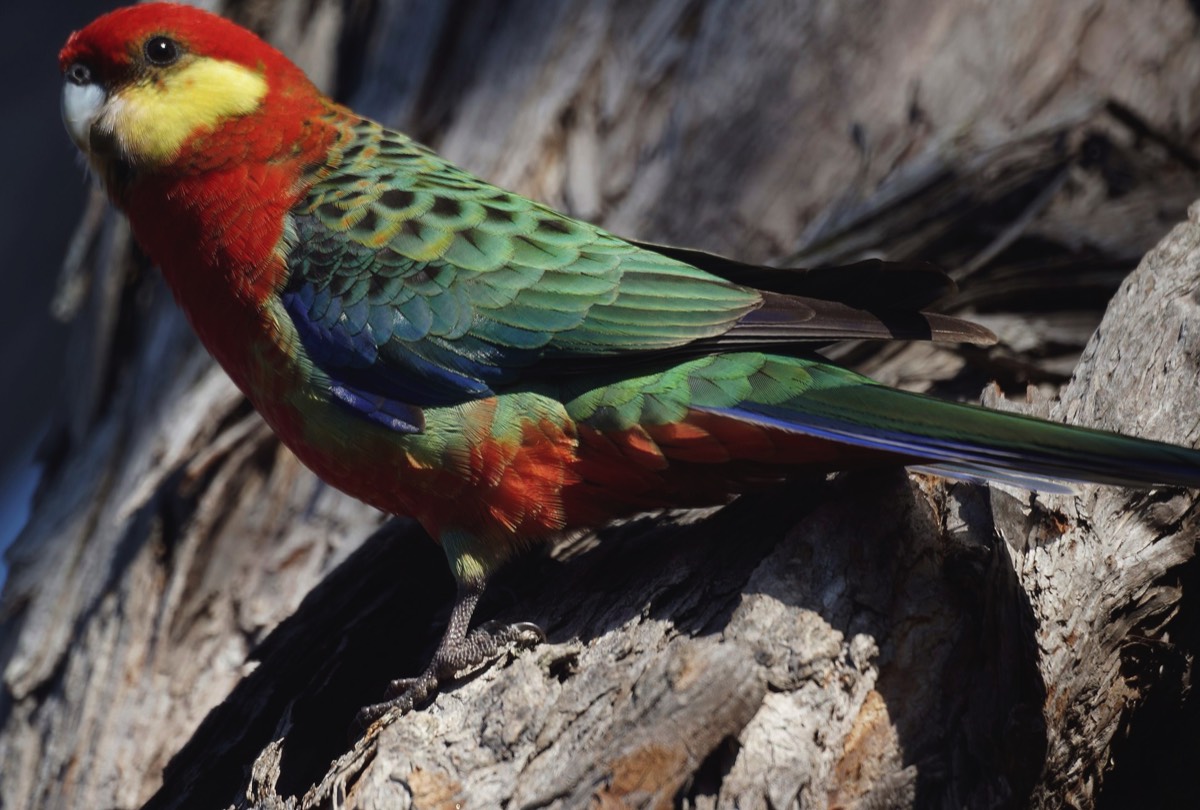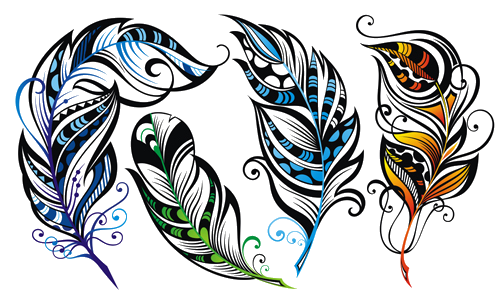Western Rosella - Platycercus Icterotis - Least Concern
The western rosella (Platycercus icterotis), or moyadong, is a species of parrot endemic to southern Western Australia. The head and underparts are bright red, and the back is mottled black; a yellow patch at the cheek distinguishes it from others of the genus Platycercus. Adults of the species exhibit sexual dimorphism with the females duller overall; juveniles lack the striking colours of mature birds and the characteristic patterning is not as easily distinguished. Their communication call is a softly delivered pink-pink sound, and much of their behaviour is comparatively unobtrusive. Their habitat is in eucalypt forests and woodlands, where they often remain unobserved until they appear to feed on seeds at nearby cleared areas.
Individuals form mating pairs and generally remain in one locality, although they will venture out to join small groups at plentiful sources of food. The western rosella is predominantly herbivorous, its diet consisting mostly of seeds of grasses and other plants, although nectar and insect larvae are sometimes eaten. The damage attributed to the species at introduced fruit and grain crops saw them declared as a pest and permitted by the state to be killed or captured. They are more placid and sociable than rosellas of other Australian regions from which they are geographically isolated and have become internationally popular as an aviary bird. Their history in aviculture begins with two 1830 lithographs of live specimens in England by Edward Lear. Successful breeding in captivity began there during the early 20th century.
Subspecies: Two subspecies are recognised at the Australian Faunal Directory
Platycercus icterotis salvadori
Platycercus icterotis xanthogenys
Description: The smallest species of its genus, the adult western rosella weighs 60 to 70 g (2.1 to 2.5 oz) and is 25 to 30 cm (9.8 to 11.8 in) long. It has broad wings with a 35 to 41 cm (14 to 16 in) wingspan and a long tail that is on average 13 cm (5.1 in), equally half the measurement of its total length. It is the only species of the genus that exhibits marked differences in the coloration of the genders —the red of the plumage is more scarlet in male P. icterotis. Females are less striking in their colouring, the more subdued red plumage being flecked with green and a smaller dull yellow patch at the cheek.
The adult male has a predominantly red head and neck, with a yellow cheek patch—bright yellow in the nominate subspecies and pale cream in subspecies xanthogenys. The red feathers are fringed with black when new. The back has indistinct black feathers mottled with red, green, and buff variation, being scalloped with these colours at the feather's edges. When folded, the wing is green, becoming black with green margins on the shoulder, with a narrow dark blue shoulder patch and blue-edged dark primary coverts. The blue of the flight feathers and coverts at the underwing is apparent when taking to the air. The upper tail coverts and rump are green tending to olive, perhaps with a red margin. The central tail rectrices are blue and green, outer tail feathers are a similar blue with a white tip. The undertail feathers are blue with white fringes. The underparts are red with green flanks. The beak is pale blue-grey with a dark grey cere. The legs and feet are slate grey, and the iris is dark brown.
In the adult female, most of the red plumage of the head, neck and underparts is replaced by green, bar a solid red band across the forehead. The yellow cheek patch is smaller, and there are no red feathers on the back and scapulars. The female has a broad white or cream bar on the underwing.
Immature birds resemble the adult female though with even more green plumage, red only on the crown, and lacking a yellow cheek patch entirely. The bill and cere are light pink, changing to adult coloration by six months of age.
The population has a cline in color variation from east to west, and variable degrees of hybridization are reported east of the Darling Range and in the southern region and Stirling Range. This intergrading between forms is recorded at locations such as Albany. Southwest Australia is also inhabited by similar, albeit larger, parrots—the red-capped parrot (Purpureicephalus spurius), readily distinguished by its yellow rump, and Port Lincoln Barnardius zonarius parrots, which present a blue cheek and black head in contrast to the green, red and yellow of this species.

Psittaciformes, The Parrot Index, a part of Phoenix Feathers © 2016 - 2023
Page last updated: 12/24/23
Phoenix Feathers

